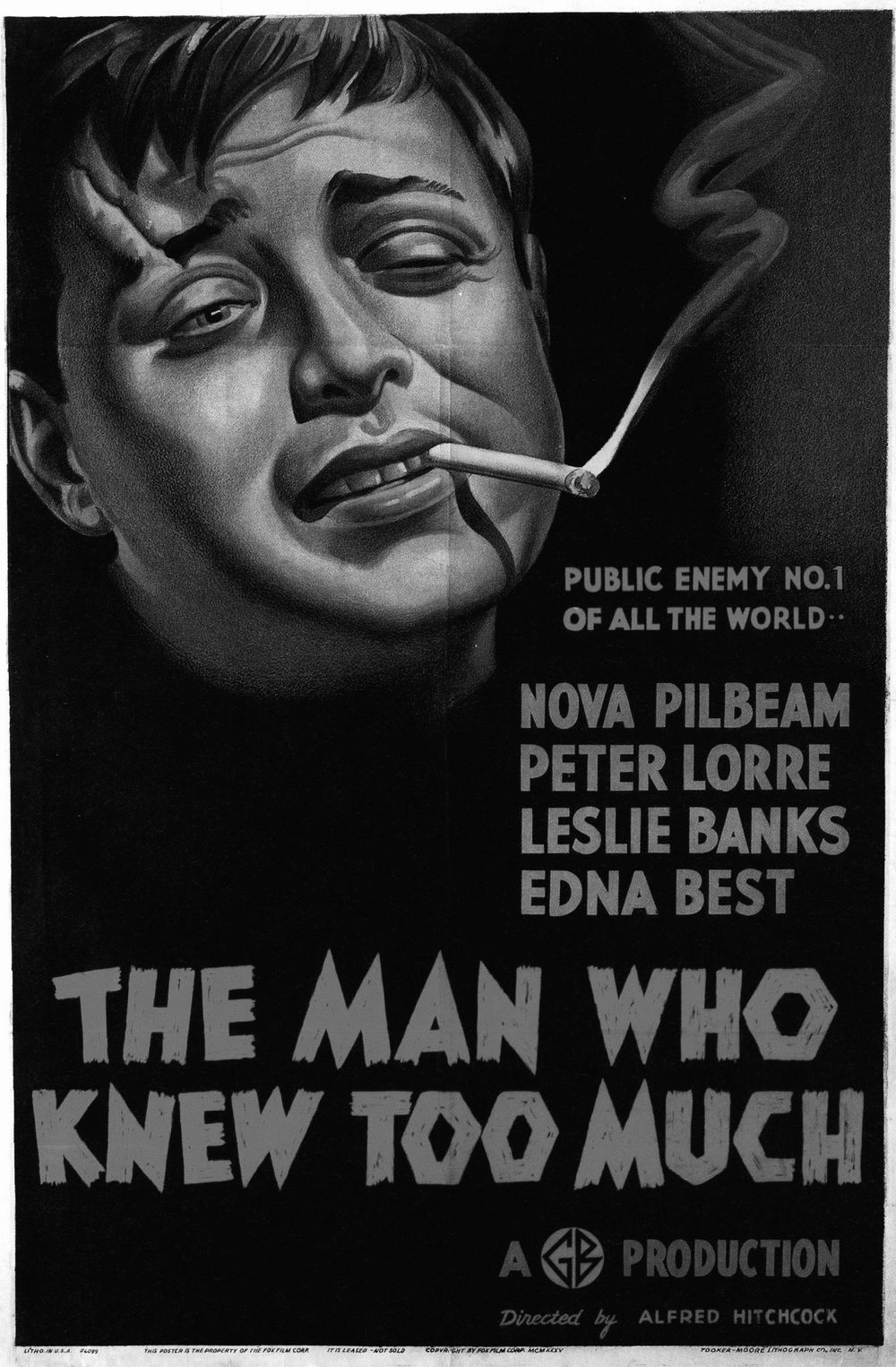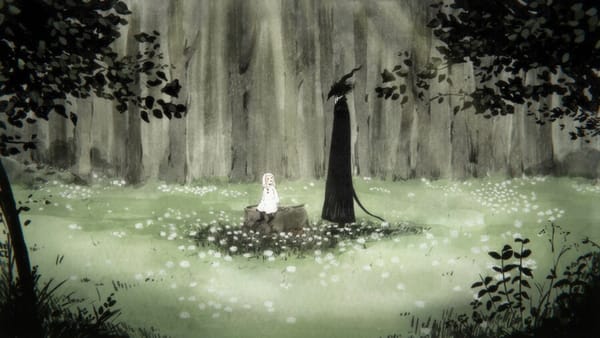Film Review: “The Man Who Knew Too Much” (1934)
by Vic Neptune
Alfred Hitchcock made The Man Who Knew Too Much twice, in 1934 and in 1956. The premise in both films is the same, even to some of the set pieces. A vacationing couple inadvertently learns about an upcoming crime of international import. The criminals kidnap the couple’s young child to keep the pair silent. In both films, the parents are put into a position of only partial cooperation with the police. The criminals will try to assassinate a foreign dignitary at a concert, they’ll kill children, they have no scruples, so the protagonists, the parents, have to deal with some nasty characters.
In the 1934 version, Peter Lorre plays the leader of the gang. He chuckles loudly at
times, he sports a silver streak in his hair, his swaggering comportment suggests a small man lashing out at the world for past grievances that probably weren’t the world’s fault. Lorre’s great and masterful performance as the murderer in Fritz Lang’s German film, M, four years prior to The Man Who Knew Too Much, had shown Lorre capable of making a loathsome character not sympathetic, but by the end we know he’s a feeling person, a psychopath who wants to be stopped. His character in The Man Who Knew Too Much has hidden, no doubt political motives, but he also has no hesitation in snuffing out an innocent child’s life as a last course of action before the police gun him, and his gang, down.
The remake, starring James Stewart and Doris Day as the parents, works as a study of the film’s good people, while the original has Leslie Banks and Edna Best, two far less colorful and interesting movie stars than James Stewart and Doris Day. The original film has the villains be the interesting group, whereas in the 1956 version it’s the parents, the villains in that film not standing out much. What the remake lacks is Peter Lorre and Frank Vosper, who plays the assassin, and the killer early on of a British diplomat who, dying, passes on a note with a London address to Edna Best. Frank Vosper has a big forehead, slicked back hair, smokes cigars—unlike every other cigarette-smoking character—possesses a smiling happy-seeming personality in sharp contrast to his amoral actions.
Leslie Banks as the father seems to be an unemotional man, taking everything calmly, even as his wife collapses when finding out her daughter’s been kidnapped. The unruffled British spirit—the “stiff upper lip”—helps in this situation, though. He never loses his cool, as if he might be some kind of secret agent himself. I found I liked Leslie Banks in the role as the film progressed. He looks a little like Kenneth Branagh, but mostly he has a wallflower appearance, a man one would never notice even in a small room. This colorlessness on screen, perhaps, helps Banks infiltrate the headquarters of the gang (he has the address, passed on by the dying diplomat).
The assassination plot involves an ingenious method of using the noisiest part of an orchestra’s playing during a symphony. During a clash of cymbals and beat of kettledrums along with a large choir the assassin will fire his gun, by himself concealed in an upper level box. Hitchcock liked to use ordinary events to surround and be influenced by sinister activities. Here, it’s as if the composer long ago put a crashing moment in his piece loud enough to conceal a gunshot. The musicians bring the event closer every measure. Hitchcock shows a brief shot of the hands of a percussionist picking up the cymbals. Hitchcock, like so many great filmmakers, would combine elements usually not thought of as having relation to each other. In this scene in the Royal Albert Hall, Hitchcock makes music suspenseful; something that, given his interest in manipulating audience expectations (through editing and sound as well), leads one to imagine that music, in this case anyway, can kill.
Hitchcock began his film directing career in 1925, making several silent films before switching to sound production in 1929. Like many directors, he found the new sound equipment clumsy and huge. Early sound films were often drenched in musical soundtracks to cover over the hissing audible when actors weren’t talking. I wonder if Hitchcock used the orchestra in The Man Who Knew Too Much as an ironic weapon aimed at early sound films, a period in the early thirties he participated in and struggled with at times to make interesting sounding films.
The film’s protracted gun battle at the gang’s headquarters, dozens of cops armed with rifles and handguns, has four cops die in the first exchange. The sound-proofed room where the villains spend their time, a kidnapped miserable girl in the other room, gets bullet-blasted to smithereens in a climax occupying a significant chunk of the film. The assassination fails because of the mother’s (Edna Best’s) scream during the orchestral clash, throwing off the assassin’s aim. Frank Vosper takes his gun and big forehead back to headquarters to die with Peter Lorre and the others. The daughter reunites with her parents, smiles and laughter follow, there are numerous dead and wounded people.
This film didn’t impress but rather disappointed me when I saw it in the 1980s. I compared it unfavorably to the remake, a fine film by itself. Seeing it again, though, made me change my mind, and drastically. Hitchcock tells his story in just seventy-five minutes. Packed with action, odd little moments, a few humorous bits, and a great performance by Peter Lorre and a Menacing Villain of the Year type of performance by Frank Vosper, The Man Who Knew Too Much from 1934 is a worthwhile viewing experience, with Alfred Hitchcock in the early thirties beginning to develop his suspense chops.




